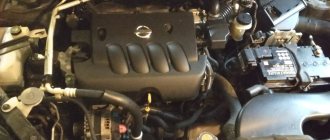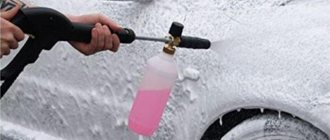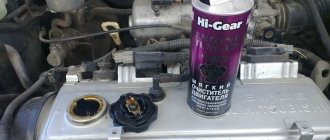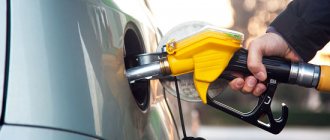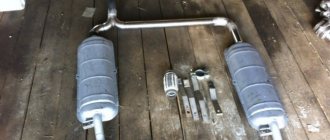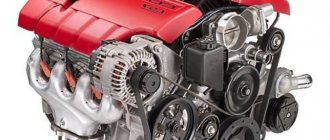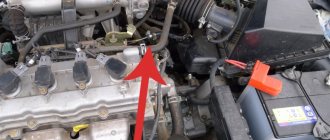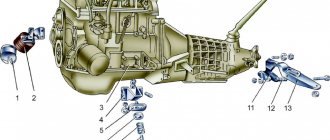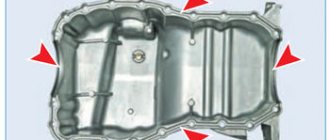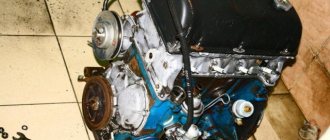The question of the need to wash the engine compartment and the car engine itself under high pressure is inevitably asked by almost every car owner during the operation of the vehicle. The cause for concern is not only the unsightly appearance of the engine and the rest of the space under the hood, but also concerns about the overall performance of contaminated components and assemblies.
The process of gradual formation of layers of dirt and salts in the space under the hood is especially relevant all year round. Drips of oil and other technical fluids become inevitable, as well as banal dirt penetrating from the outside into the leaky engine compartment. The rest of the article is aimed at helping the reader understand all the pros and cons of washing an engine with a Karcher.
To wash or not to wash?
The most affordable and widespread option is cleaning the engine using professional car washes, which actively and widely use Karcher equipment in their arsenal. Any Karcher with a gasoline engine, a Karcher with a diesel engine, or a Karcher with an asynchronous engine is suitable for this procedure.
You can wash the engine yourself, especially if you have personal access to such equipment. Before starting the process, it is extremely necessary to know certain nuances associated with cleaning a car engine from dirt.
Supporters and opponents of this method of washing the power unit are divided into two opposing camps.
Arguments for"
Among car owners who advocate the need for cleaning, there is an opinion that deposits and contamination can actually shorten the life of the power unit and impair the serviceability of other associated elements, so periodic cleaning of the working mechanisms becomes a necessary procedure.
- a heavily polluted motor demonstrates deterioration in heat transfer;
- the risk of fire of spilled liquids in the engine compartment increases;
- potential deterioration in the power characteristics of the unit occurs;
- likely increased fuel consumption;
- current leakage may occur;
- the power unit may begin to operate less steadily;
- it becomes more difficult to visually detect leaks and other problems, which are noticeably less noticeable on a dirty internal combustion engine;
- harmful technical fluids evaporating on a hot engine are observed to enter the air ducts and penetrate into the passenger compartment;
Arguments against"
Other car enthusiasts argue that washing the engine compartment, especially with a Karcher, can only harm the car, and dirt deposits do not pose any significant threat to the engine and other components. The above arguments from supporters of regular cleaning are only suitable for very heavily contaminated units as a result of an emergency malfunction or individual operating characteristics.
- After such a Karcher wash, the car often does not start;
- electrical connectors protected by rubber seals do not guarantee complete tightness against exposure to high-pressure water from a washing machine;
- the engine control unit located in the engine compartment may fail partially or completely;
- failure of various expensive electrical equipment;
- pouring water onto spark plugs and spark plug wells;
- high probability of short circuit;
- engine water hammer due to water entering the cylinders through the ventilation passages or inlet pipe;
- accelerated corrosion of joints and welds in the engine compartment;
- rubber and plastic sealing joints and insulation become unusable after contact with aggressive detergents;
Next, we intend to substantively understand whose side the truth will be on. Let's turn to the most authoritative opinion.
Washing technology, or how to avoid stains?
Before you start washing, you need to prepare a high-pressure car wash, i.e. connect it to communications - electricity and water supply. To do this, the water supply must have a special fitting to which you will connect the hose. True, some models of mini-washes can take water from barrels, cans or even ponds. In this case, you just need to lower the supply hose into the water source.
Then you need to connect the high pressure hose to the foam nozzle. You need to pour foam into the plug'n'clean tank, which is connected to the nozzle. Keep in mind that the foam is sold in concentrated form, so it must be diluted with water in the ratio indicated on the package. When all the hoses are connected to the device, you can plug in the washer and start washing.
If you have separate products for rims and plastic surfaces, apply them to the contaminated areas. To do this, you can use a regular sprayer. While the chemistry reacts with the dirt, we move on to the main part of the work - contactless car washing.
Many car enthusiasts make the mistake of starting washing by soaking and removing the main dirt. If you want to achieve a perfectly clean surface without streaks, you must follow the technology from start to finish. In particular, the foam should be applied to dry dirt, as a result of which it reacts better.
It is necessary to apply the composition with horizontal movements, from bottom to top, but not vice versa. This is important because the lower strip, reacting with dirt, prevents the upper strip of foam from flowing down. This not only saves money, but also improves the quality of washing. Keep in mind that when applied, the foam strips should slightly overlap each other, due to this, there will be no untreated areas on the surface.
Pay attention to the concentration of the solution: if it is too low, sediment will form on the surface of the body. Determine the concentration yourself “by eye” so that the foam is thick enough.
An important point is the exposure time of the foam to the dirt: if you wash off the detergent too early, it will not have time to react, and accordingly, the dirt will not be removed properly. If the foam is overexposed, the “raised” dirt will begin to fall onto the body in the form of sediment, which will subsequently lead to the formation of streaks. Therefore, it should remain on the surface of the body for 4-5 minutes.
We wash off the foam with a stream of clean water under high pressure. We start working with the wheels, and also pay maximum attention to the wheel arches. Then we rinse the car in the same sequence in which the foam was applied - first we clean the sills, then the doors, fenders and windows, and lastly the roof. Don't forget to wash your rear view mirrors too. We move the jet, like the foam, in horizontal movements, slightly overlapping each lower clean strip.
Pay attention to areas under license plates, moldings and other hard-to-reach places where dirt usually gets stuck. If you wash them poorly, dirty streaks may appear underneath them later. To achieve the best results, the car needs to be rinsed again. Now we direct the jet from top to bottom, i.e. I wash the body with vertical stripes, also overlapping each other.
A high-pressure stream of clean water perfectly cleanses dirt, knocking it out of all crevices
Now you need to apply a protective composition, for example, RM 824 - this is a wax that has an intense water-repellent effect. Keep in mind that the composition is applied manually using a spray bottle to all body surfaces, except glass and mirrors. Before use, be sure to dilute the product with water according to the instructions on the package, for example, RM 824 is diluted in a ratio of 1:9.
A few minutes later, after treating the surface with wax, turn on the device and wash off the protective coating with a stream of clean water under high pressure. The body is rinsed from wax in the same way as from foam, the only thing is that the jet must be directed at a close distance from the surface of the car - about 10 cm.
When working with the gun at a close distance from the body, hold the high-pressure hose with your other hand so that it does not damage the paintwork of the car.
This completes the work with Karcher. Now you need to take a squeegee and use it to remove water from the surface of the car. After this, take a dry cloth and wipe the car with your own hands. As a result, there will be no streaks or traces of water drops on the surface.
Recommended washing frequency
Each argument presented above by car owners has a well-deserved right to exist, but let’s turn to the recommendations of the car manufacturers themselves. Car manufacturers emphasize that the recommended cleaning of the internal combustion engine and engine compartment is not to improve the appearance of the engine compartment and its characteristics, but rather a forced necessity.
It is recommended to clean the engine only in a number of specific cases:
- Severe contamination of the unit with automobile oil due to leakage of oil seals, oil lines and pipes.
- To carry out diagnostics to detect aging of connections and rubber seals, leakage of technical fluids, etc.
- Before complex work on the overhaul of the power unit, implying its disassembly, partial or complete dismantling of attachments, etc.
- Pre-sale preparation for placing the car on those trading floors where cleanliness of the engine compartment is a prerequisite.
Based on all of the above information, we can conclude that it is not recommended to carry out the engine washing procedure unless absolutely necessary. Unscheduled cleaning of the power plant will be required only if the unit is heavily soiled and the individual operating characteristics of the vehicle require such regular cleaning.
Is it possible to wash an internal combustion engine with Karcher?
There is often a question on the Internet about whether it is possible to wash a car under the hood with Karcher, because in advertisements for car washes they often show such a picture. The washer directs a stream of water at the power unit under a pressure of 150 bar and washes away all the dirt. The disadvantage of this method is that such exposure can easily damage wiring, numerous sensitive sensors and relays. At the same time, protective covers do not always save and cannot withstand pressure. There is also a risk of moisture getting into the spark plugs and generator, which leads to corrosion and failure of the device.
With this in mind, it is easy to answer whether it is possible to wash a car under the hood with a Karcher. Such an action is permissible, but in the case of preliminary preparation. It is necessary to cover all “delicate” parts: sensors, generator and others, and also treat them with water-repellent lubricants. It is advisable to wash the car engine under a pressure of no more than 100 bar, and after finishing the work, dry everything well.
In practice, washing the engine yourself with Karcher is relevant in the following cases:
- excessive contamination of the engine with oil and dust due to leakage of various components;
- identification of old connections and rubber seals;
- checking the quality of connections for the fact of leakage;
- the need for major repairs;
- preparation before sale for placing cars on trading floors.
Decide whether it is possible to wash the car’s power unit taking into account these recommendations and make sure that the work is up to date.
Do it yourself or contact a specialist
If you are faced with the need to wash the engine of your car for various reasons, but do not have experience in implementing this process, then the best option would be to contact a professional car wash that provides this service or a service station.
Please note that washing specialists are well aware of the process itself; they will correctly select and apply the necessary cleaning chemical composition. An additional motivation for visiting a car wash is the extensive experience of the service staff and the potential availability of a wide selection of specialized detergents.
Another argument in favor of a car wash can be the simple saving of your free time. It is worth avoiding those car washes where the client is informed that the service administration is not responsible for possible malfunctions after washing the engine.
This advice does not mean at all that having a Karcher at your personal disposal excludes the opportunity to properly wash the engine yourself. Having decided on the decision to wash the engine yourself, you also need to correctly select and purchase an engine cleaning product, have some tools available, and comply with all the necessary conditions and recommendations regarding engine washing. This approach will help to avoid many mistakes and prevent harm to the engine.
Is it worth washing it yourself?
Knowing how to wash a car engine yourself safely with Karcher, you can easily get the job done without going to a service station. But keep in mind that in the absence of experience it is easy to make many mistakes and damage expensive components. It is best to entrust the work to professionals.
But is it possible to do everything yourself? This is real, but washing it yourself is fraught with the following errors:
- Using unsuitable detergents.
- Use of flammable cleaning compounds.
- Violation of the engine temperature regime..
- Washing the engine with Karcher under maximum pressure, which can deform fragile elements.
- Poor protection of electrical components, connectors and terminals.
- Inability to properly dry the components of the power unit after completion of work.
- Car wash with Karcher while the car is running, etc.
Mistakes made during unprofessional washing
- the use of detergents not intended for such a procedure (any shampoo, soap, dishwashing detergent, aggressive chemicals, etc.);
- use of solvents, gasoline, kerosene, etc. for cleaning the engine compartment. (highest risk of fire);
- non-compliance with the temperature regime when washing the internal combustion engine (significant temperature changes should be avoided, which can lead to deformation of the cylinder head);
- washing with a “Kärcher” under high water pressure (the jet breaks through the thermal insulation of the hood, breaks and deforms numerous fragile elements, etc.)
- insufficient protection of electrical connections, terminals and connectors. Ignoring the necessary rules for preparing the internal combustion engine for washing;
- lack of quality drying after cleaning the engine. Washing in winter;
- washing with the engine running;
Using high pressure washers
The design of the engine compartment of each car requires a certain level of protection of important components and assemblies from moisture. But since under normal operating conditions the amount of moisture is very small, washing the engine with a Karcher can really harm the car.
Using a jet of water under high pressure leads to water “clogging” even the most secluded corners of the engine compartment. As a result, water can leak to the contacts of electrical appliances, actuators, and sensors of the engine power system. But most of all, you should be wary of moisture getting into the ECU, which can burn it, or into the fuse box, some of which are located in the engine compartment in many cars. This is why you need to wash your car engine correctly.
What and how to wash the engine as safely as possible
If you need to clean the engine yourself, you should follow certain rules.
- Please note that you will be working with auto chemicals, which requires increased care and extra precautions (gloves will be needed, and there may be an additional need for eye and respiratory protection).
- The next step is the need to determine the nature of the contamination of the internal combustion engine. Those contaminants that are caused by car oil that is caked and covered with a layer of dust cannot be washed off quickly. It is necessary to apply detergents for the time specified in the accompanying instructions to soften contaminants of this nature.
It is better to immediately abandon the decision to wash the engine under high pressure water with a Karcher if there is the slightest doubt about the advisability of this method. It is quite possible to successfully apply and wash off the applied solution with a brush or a stream of water under normal pressure, but this will require additional time.
Some useful tips - a life hack for a car wash
To ensure that washing your car with a Karcher at home always gives the same results as professional car washes, follow the following recommendations:
- do not wash your car in the sun, as shampoo and other chemicals will dry quickly without having time to react with dirt;
- For the same reason, do not start washing the car immediately after the trip - let it cool. If this is not possible, start working with the doors, then move on to the wings and roof, and only lastly apply foam to the hood so that it has time to cool a little;
- if the car body is wet after rain, let it dry;
- You shouldn’t skimp on car chemicals, since cheap shampoos are unlikely to allow you to achieve good results;
- Do not use regular shampoos to wash your car - high-pressure washers require special car chemicals.
That, in fact, is all you need to know to properly wash your car with a mini car wash or Karcher. The only thing, do not forget about safety - active foam, when it gets on concrete, forms a slippery surface, so try to immediately wash it off from the area around the car. Also, make sure that the washer hoses are not lying around under your feet.
Selecting a detergent
Washing an internal combustion engine involves using only products intended for this purpose. The modern market offers a huge number of formulations in plastic and glass containers, aerosol cans, etc. This variety is supplied both in finished form and in the form of concentrates and gels that require dilution in the specified proportions.
Read the instructions carefully and try to use only products from trusted manufacturers, beware of counterfeits.
Most of these compositions are universal and are designed to combat a wide range of pollutants, but there are also narrowly targeted agents. The main criteria for choosing are: minimizing the impact on rubber and plastic elements, toxicity level, packaging and price. You should not purchase the most affordable products or overpay for expensive ones. It is better to opt for products in the mid-price range.
Recommendations before starting washing
- Dismantle all protective and decorative plastic parts and screens that can be removed;
- Be sure to cover all necessary information inscriptions and plates on tanks, panels and other body elements;
- The engine temperature before washing should not be lower or higher than 40-50 degrees. On a heated internal combustion engine, detergent compositions will evaporate very quickly, and on a cold one their effectiveness will not be fully manifested. The water itself during washing should have a similar temperature, close to the recommended temperature of the internal combustion engine;
- All elements of air intakes, connectors and terminals, the battery itself, car alarm elements and other standard and non-standard electrical equipment must be carefully sealed and protected from water. Scotch tape and polyethylene are perfect for this;
How to properly wash a car under the hood
Above, we figured out that with the right approach, you can get to work. But for this it is important to know how to properly wash a car engine with Karcher yourself. To resolve this issue, follow a number of recommendations.
Before you start washing, do the following:
- Remove all accessible protective and decorative parts/screens.
- Cover informational inscriptions and plates on tanks, panels and other elements.
- Make sure that the engine temperature before washing should be at 40-50 degrees. If it has a high temperature, detergents will evaporate from the car engine. With a lower setting, washing the engine with Karcher is not as effective.
- Protect all terminal elements, connectors, alarm elements and other electrical equipment from moisture. For these purposes, you can use regular tape and polyethylene.
If you have decided whether cleaning can be done using Karcher, please read the instructions below. Let's take a closer look at how to wash a car engine yourself using Karcher correctly:
- Apply the required layer of special “chemistry” to the elements that need to be washed. To do this, use a spray or brush.
- Wait a certain time for the product to penetrate into the composition. Information on this issue is indicated on the manufacturer's packaging.
- Make sure that the thickest dirt is liquefied.
- Set the required pressure. It is advisable that the engine flushing with Karcher be carried out under a pressure of no more than 100 bar.
- Wash off dirt from the car engine with a Karcher until the job is complete.
- Once cleaning is complete, dry the starter and alternator, and bleed the ignition coil and other accessible wiring components.
Currently reading: Brief review of the new Renault Logan 2
At the final stage, experts recommend washing the entire car body with Karcher to remove traces of “chemicals” from the surface. In this case, the answer to the question whether this can be done is always positive.
Let's start washing the engine
- Apply the required layer of a specially prepared cleaning chemical composition to the engine. This can be done with a brush on open surfaces, and in hard-to-reach places the composition is applied using a sprayer. Follow the instructions for use and wait the amount of time specified in the instructions after application.
- Do not rush to immediately wash off the applied composition. Make sure that the thickest layers of dirt have had time to liquefy in all places. During the washing process, try not to raise the pressure to 100-150 bar, but use the minimum water pressure required for this. After the final rinsing, evaluate the result obtained; if necessary, the procedure can be repeated;
- The most important procedure is the need to dry the engine from moisture. This is done using pressurized air from a compressor. First of all, we very carefully dry the generator and starter, blow out the ignition coils and all accessible elements of the electrical wiring of the car.
- The final stage of engine washing is a thorough washing of the entire car body, which is necessary for the final removal of all chemical compounds from the surfaces;
Engine washing procedure
Before you figure out how to properly wash a car engine, you must first prepare for this procedure:
- Disconnecting the negative terminal of the battery.
- Disassembling the engine protection.
- Protecting wires and sensors with film. You need to wrap them tightly and secure everything, if possible, with tape. It is recommended to treat with water-repellent substances. This will help avoid unexpected damage due to liquid penetration there.
- Disconnecting all parts that interfere with free access to the internal combustion engine.
So how can you clean the car’s engine compartment from dirt on your own? Let's consider this issue depending on the funds that will be used.
How to properly wash an engine using an aerosol :
- Apply the substance evenly to the internal combustion engine.
- We wait for some time, about 5-10 minutes.
- Using microfiber or a soft cloth, clean the motor.
How to properly and carefully wash a car engine with water yourself:
- Cool the internal combustion engine to 50 degrees.
- We perform mechanical cleaning of the treated surface.
- We apply chemicals.
- We wait 10-15 minutes.
- We pour water or treat it with a Karcher . When washing this way, it is important not to bring the sprayer closer than 50 cm .
If water gets on electrical equipment
The main common troubles that car owners may encounter after washing the engine compartment are:
- the car won't start
- the car is shaking
- the car jerks
- revs are floating
- oil pressure light came on
- the check light came on
Let's look at the possible causes and solutions for each individual malfunction in more detail.
If everything is dried and connected, the battery and its terminals are in order and tightened, the starter turns and the fuel pump pumps, but the car does not start after washing, then you should once again pay attention to the ignition system.
- In those machines that are structurally equipped with a distributor, you will need to remove water from under its cover by blowing it out and wiping it dry. Next, we wipe all the armored wires, unscrew and inspect the spark plugs, and dry the spark plug wells.
- If a car has a distributorless ignition system and has separate coils for each cylinder, then all of them will have to be removed and dried. The remaining actions are similar to working with the distributor option. The main rule is to blow and dry all accessible wires in the engine compartment, because no one is immune from unnoticed damage to their insulation.
- Failures in the operation of the internal combustion engine are commonly called “triples”. During such failures, one of the cylinders stops functioning normally. The driver immediately feels an increase in the amplitude of the engine and constant strong vibration. At various speeds and at idle, the engine runs with skips and dips. This behavior of the machine is often due to similar reasons indicated in the first paragraph. We carefully inspect the armored wires and spark plugs and dry the spark plug wells.
- When driving, the car jerks noticeably, there is an increase in fuel consumption and a drop in power. If the methods described above did not help normalize the operation of the internal combustion engine, then problems with the engine sensors are possible. They may occur due to the fact that the alkaline shampoo has damaged them during the washing process.
- Floating speed indicates that after washing there are problems with the throttle valve or throttle position sensor. These elements require cleaning and drying, and it is also advisable to reboot the ECU with the engine by resetting the terminals for 10-15 minutes.
- The oil pressure light on the dashboard may come on for a number of reasons. The first is that the same water gets on the oil pressure sensor and its contacts, which are very often located directly under the oil filter. The second reason may be the already familiar water getting into the candle wells. It is treated by mandatory drying and/or replacement of failed parts.
- The "check engine" warning light, referred to simply as a "check" by motorists, is a clear indicator of a malfunction. Such a signal on the instrument panel appears as a result of errors and malfunctions in the operation of the internal combustion engine, which are recorded by numerous sensors, but does not carry any specific information. The problem can only be localized by reading the indicated engine errors from the ECU memory using a special scanner at a service station.
After washing the engine compartment, especially with a Karcher, the sensors and their connectors are exposed to intense contact with detergent and water, so any malfunction in the operation of the engine itself or just the sensor will cause a “check” to appear. Sometimes the problem goes away on its own as the contacts dry completely or the problem is eliminated. In some cases, the same reset of the battery terminals for a few minutes helps, which allows you to reset the error.
Tips and tricks
Almost every car wash has a warning that the staff is not responsible for the condition of your car after washing the engine. This is why you need to take care of your car yourself:
- ask the washer to cover important electronic components in your engine compartment (for example, distributor cover, fuse box, ECU, switch). To do this, you can use cling film, plastic bags and tape;
- Using a high-pressure washer, you need to wash the engine from a distance. In no case should you bring the nozzle close, as the enormous pressure can damage electrical connections and break the tightness of sealing products;
- Every self-respecting car wash should have the ability to supply compressed air. Therefore, you should definitely blow out the engine compartment, which will significantly reduce the likelihood of unpleasant consequences. Particular attention should be paid to all electrical connectors and sensors;
- After washing, especially in winter, it is advisable to let the car run for 15-20 minutes to ensure that it gets rid of moisture.
These recommendations, of course, must be followed if you want to properly wash the engine with your own hands.
Which car wash can you trust?
The safest way to wash a car engine is the steam method. A jet of hot steam does an excellent job of removing dirt and makes it much more gentle than a high-pressure washer. Therefore, after blowing with compressed air, you are guaranteed not to have any troubles. Unfortunately, the cost of such a procedure cannot be called democratic.
The car body is washed with acid-base compounds, which quickly remove dirt, but have a bad effect on some rubber compounds, and also accelerate the oxidation process of contacts. That is why it is better to go to car washes where special alkali-free, dielectric compounds are used for engine compartments.
Stages of quality washing
You can properly wash the engine compartment of your car even at home. To do this you need:
- cover important elements of the car's electrical circuit;
- knock off the top layer of dust with a small pressure of water, at the same time wetting the mud deposits;
- apply chemicals. For do-it-yourself washing, special foam cleaners are sold that you simply need to spray around the perimeter of the engine compartment;
- give 5-10 minutes to dissolve mud deposits (exact time is indicated in the instructions). It is important to prevent the composition from drying out;
- wash away dirt and chemical residues. This can be done with a Karcher from a short distance. If the cleaner is of sufficient quality, then the dissolved dirt can be washed off with the pressure of pipeline water.
